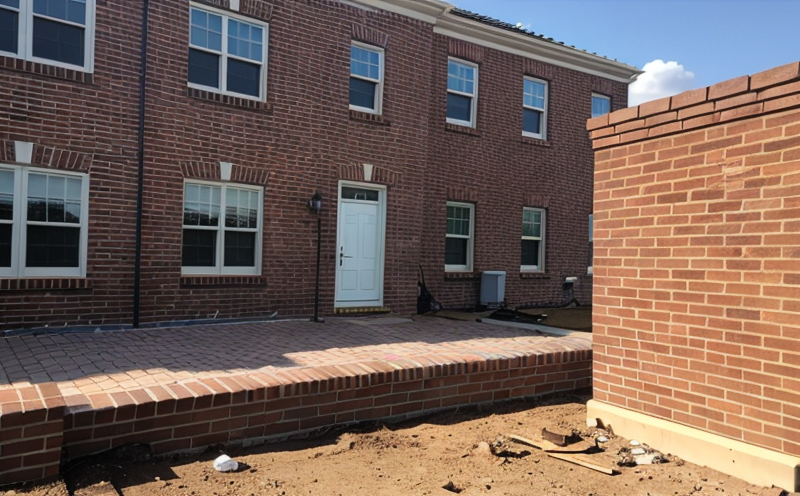ISO 10545 Absorption and Saturation Analysis
The ISO 10545 standard provides methodologies to determine the water absorption and saturation characteristics of masonry units, such as bricks. This service is crucial for quality assurance in building & infrastructure testing, ensuring that materials meet specified performance criteria under various conditions.
Water absorption plays a significant role in determining the durability, weather resistance, and overall performance of brick and mortar structures. Excessive water absorption can lead to deterioration due to freeze-thaw cycles or chemical reactions with salts present within the masonry units.
The testing process involves placing specimens into a container filled with distilled water until full saturation is achieved. After an appropriate soaking period, excess water drains from the samples before measuring their mass. The difference between the initial and final masses indicates the amount of absorbed moisture.
For accurate results, it's important to follow precise procedures outlined in ISO 10545. Specimens must be representative of the batch they originate from; therefore, sampling techniques are critical. Proper specimen preparation includes cleaning surfaces free of dirt or debris prior to testing.
The absorbed water content is calculated using either open-crumb method or closed-cell method depending upon whether unsealed voids contribute significantly to overall volume. Open pores allow more rapid diffusion than sealed cells which resist penetration by liquids.
Once determined, this data helps engineers select appropriate materials for construction projects where long-term exposure to moisture may occur. Additionally, it aids in optimizing production processes by identifying optimal curing times or additives that enhance resistance against excessive hydration.
In summary, performing ISO 10545 absorption and saturation analyses allows stakeholders involved in building & infrastructure development to make informed decisions about material selection based on empirical evidence rather than assumptions alone.
Benefits
- Ensures compliance with international standards like ISO 10545 for quality assurance purposes.
- Promotes consistent material performance across different batches of bricks.
- Aids in selecting suitable materials suited to specific environmental conditions.
- Supports the optimization of manufacturing processes through precise data collection.
Environmental and Sustainability Contributions
- Reduces waste by ensuring only suitable materials are used in construction projects.
- Promotes energy efficiency by enhancing durability against adverse weather conditions.
- Fosters sustainable development goals aligned with LEED certification requirements.
Use Cases and Application Examples
| Use Case | Description |
|---|---|
| Durability Assessment | Evaluating how well masonry units withstand repeated cycles of wetting/drying. |
| Material Selection | Picking the most appropriate type of brick for a specific project considering expected environmental factors. |
| Process Optimization | Identifying optimal curing conditions to minimize unnecessary absorption rates during manufacturing. |
| Compliance Verification | Confirming adherence to relevant international standards such as ISO 10545. |





